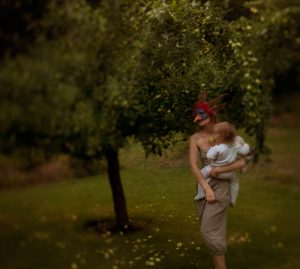
Sara Stridsberg was born in Stockholm in 1972. Her debut novel, Happy Sally, was published in 2004, and she was awarded the Nordic Council Literature Prize for her novel, Drömfakulteten (2006; The Dream Faculty), in 2007.
A general project in Sara Stridsberg’s writing would seem to be the ‘rehabilitation’ of unpopular, or at least suspect and criticisable, women – whether they be actual historical people or fictional characters.
Her novel, The Dream Faculty, and the play, Valerie Solanas ska bli president i Amerika (2006; Valerie Jean Solanas for President of America), centre on the radical American feminist, Valerie Solanas, famed for her SCUM Manifesto and her attempt to kill Andy Warhol. Stridberg’s novel, Darling River (2010), centres on Vladimir Nabokov’s Lolita.
In her play, Medealand (2009), Stridsberg recreates the fury over all furies, the Greek tragic heroine, Medea, who, mad with jealousy, kills her own children in order to take revenge on their father. Stridsberg poetically evokes the essence of these questionable women and rescinds every condemnatory perspective on them.
In Darling River, the itinerant mother breaks off her journey for a while in Vienna; lying on the doctor’s couch, she asks: “What is a mother actually without her children?”, to which the doctor counters: “How would you describe her?”, and the mother replies: “I would want to describe her without destroying her.” Stridsberg’s writing appears to have the overall ambition of describing the characters without destroying them. To describe without passing judgement.
Happy Sally
Stridsberg’s debut novel, Happy Sally (2004), is about the swimmer Sally Bauer, the first Scandinavian to swim across the English Channel in1939. She is less well-known than Solanas, Lolita and Medea, so she has become less of a target of condemnation. But she shares the reprehensible trait of Stridsberg’s later protagonists: She has a project that takes priority over her loved ones. Moreover, her drive for triumph and her disdain for weakness, “I have always hated weakness in myself, in humankind”, share some form of kinship with the Nazi ideology of her day.
Sally forsakes her beloved Marguerite in order to carry out her swimming project: “I have lost the most precious thing I have ever possessed, my cherished Marguerite, and yet I regret nothing. If anyone gave me the chance to turn back the clock, I would choose the Channel again and again.” After her triumphant Channel success, she receives a congratulatory telegram from Adolf Hitler, celebrating his triumph in Central Europe, while she celebrates hers further north: “Four days later, Germany marches into Poland. At the same time, Sally is driving in a procession of vehicles through the streets of Malmoe, cheered on by 30,000 people. She looks happy in the newspaper cuttings.”
In Happy Sally, identifying with a ‘handed-down’ female character is not simply the author’s device, but also a theme. Besides Sally, the novel has two other first-person narrators and one of them, Ellen, identifies with Sally to such an extent that, fifty years later, she attempts to imitate Sally’s cross-Channel swimming achievement. The third first-person narrator is Ellen’s daughter, telling us what it is like to be the child of a mother, who is forever heading off into the sea.
The mother addresses the daughter: “When you arrived I got heavier, it wasn’t just the pregnancy and the fact that I carried you around all the time. It was something else, as though I was planted more solidly on the ground.” The daughter addresses the mother: “You’re on your way down to the lake. Goggles around your neck, hair fluttering, happy. I’m hanging onto your arms, crying when you leave me.”
Weaving various voices and narrative strands in and out of one another sets the tone in Stridsberg’s fictional art. As does the sensuous prose in which landscapes (in this instance the beach and the sea) are conjured forth by means of a handful of recurring motifs (salt, jellyfish, underwater plants, goggles, coraciiformes), and where nasty things are described just as poetically as beautiful things. Sally in the water: “The waves break in my mouth, the taste of semen. And the currents never seem to stop, they look fine on the sea chart, but the rough weather just makes them stronger./ They feed me with sugar water until I wretch.”
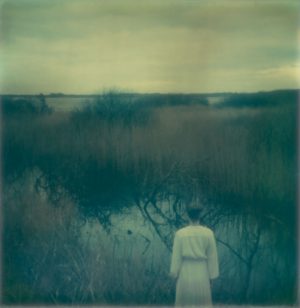
Stridsberg’s Sally and Ellen share having a pressing project (swimming, jealousy, writing) with her Medea and Solanas, which causes them to forsake their nearest and dearest. In Darling River, this role is assumed by Lolita’s mother, who leaves husband and daughter in order to tour around Europe with car and camera. The question of what happens to a woman who dedicates herself to projects other than motherhood and the romantic relationship – as well as the story of painful separation between mother and daughter – is present in Stridsberg’s writing from the outset. Ellen’s daughter in Happy Sally, Valerie in The Dream Faculty, and Lo in Darling River are all daughters longing for mothers who vanish, completely or periodically, into the sea or the river or out on the roads.
The Dream Faculty
The Dream Faculty is one long declaration of love to Valerie Solanas, author of the radical and satirical feminist manifesto SCUM (Society for Cutting Up Men). Stridsberg translated Solana’s work into Swedish in 2003, and lets her fictional characters quote extensively from SCUM: “Life in this society is, at best, an utter bore, and no aspect of society is at all relevant to women. There remains for civic-minded, responsible, thrill-seeking females only to overthrow the government, eliminate the money system, institute complete automation, and destroy the male sex.” (SCUM Manifesto).
As stressed in an introductory note, The Dream Faculty is not a biography, but “a literary fantasy” based on Solanas’ life and work: “All the people appearing in the book must therefore be regarded as fictional, even Valerie Solanas.”
A short prelude describes Solanas’ death: “A hotel room in the Tenderloin, San Franscisco’s red-light district. It is April 1988, and Valerie Solanas lies dying of pneumonia, on a dirty mattress and urine-soaked sheet. […] On April 30, her body is found by hotel staff. The police report states […] that her body is covered in maggots, and her death probably occurred sometime around April 25.”
Solanas’ deathbed triggers the narrator’s power of imagination: “I imagine that I am there with Valerie.” The narrator’s fantasy of sitting alongside Valerie’s deathbed in order to alleviate the loneliness in her act of dying is one of several recurrent strands in the novel and is played out in dialogue, the narrator expressing love, Valerie rejecting it: “NARRATOR: I love you. VALERIE: Fuck you.”
Dialogue is one of the principal forms in the novel, not only between Valerie and the narrator, but also between Valerie and her mother, Dorothy, who she loves amid roses, desert sand, river silt, and sherry in her childhood town of ‘Ventor’, between Valerie and “Silk Boy”, who she loves amid sharks and seahorses on the beach in Florida, between Valerie and Cosmogirl, who she loves amid laboratory animals at the Department of Psychology, the University of Maryland, between Valerie and Ruth Cooper, her psychiatrist at Elmhurst Psychiatric Hospital, between Valerie and Andy Warhol, who greets her in a silver wig at his Factory in New York.
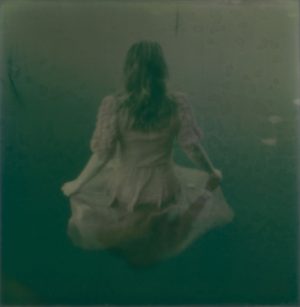
The – non-dialogue – narrative and descriptive passages are written in the second person singular, and characterised by the narrator’s approach to Solanas – her strong-willed imagination of every sense-impression of Valerie’s life, as in this situation from her childhood: “You are walking on your own down to the river bank. Your feet in the dark mire, in river mud, and the birches reach for the water, and the patches of rotting pollen. This enchanted light, remember it for ever, and the muddy aquatic creatures, and the screeching birds in the distance, heavy streaks of cloud above.”
The novel is composed as a form of montage, cutting between a series of strands each with its own time and place, while we are kept informed by section titles (“Bristol Hotel, 25 April 1988, The Day of Her Death” – “New York, May 1968” – etc.). There is also a chronological progression through the five parts of the book: “BAMBILAND” (Childhood with Dorothy in the Desert), “OCEANS” (Youth with Silk Boy in Florida), “SCIENCE PARK” (Student Days with Cosmogirl in Maryland), “THE FACTORY” (New York, Progress), “LOVE VALERIE” (New York, Decline).
Furthermore, each part includes an alphabetised section of text – in the first four parts titled according to the authority involved: “Narrators”, “Architects”, “Psychoanalysts”, “Parasites”, and “Presidents”. There are also many quotations embedded in the text, primarily from Valerie Solanas’ SCUM Manifesto and from Sigmund Freud’s Theory of Sexuality, referred to in the novel’s secondary title, “Addendum to the Theory of Sexuality”.
A number of recurring, painterly motifs, e.g. colour, re-occur throughout the book. This is highly characteristic of Stridsberg’s prose: she makes various specific sense-impression universes available to us by painting in a number of motifs and repeating them with variations.
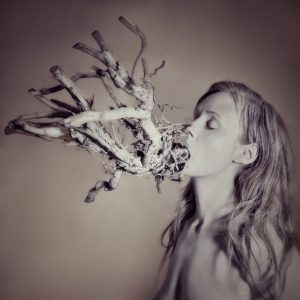
Valerie’s childhood universe is composed of desert, river, stagnant silt, mother Dorothy’s frocks and sherry-breath, father Louis’ yellow automobile, roses, and rose-pink. The strand of roses and rose-pink links Dorothy’s romantic dreams and pink letters with the fabric of the hammock, on which Valerie is raped by her father (who is never called father, but Louis): “[…] he was a tormented chaos of tears, and lust, and the material of the hammock a net of pink wild roses that Dorothy had embroidered in the evenings […] and afterwards, he always wept and tried to disentangle the mess of chewing gum in my hair, and I don’t know why the chewing gum always got stuck to my hair, while I was counting the wild roses, which were blood roses and death roses […]”
Valerie’s youthful love affair on the beach in Florida is composed of sea horses, sharks, sun-bleached books, salt and silk, blue and white (with a touch of rose-pink added by Dorothy). Life with the beloved Cosmogirl is composed of things like cigarette smoke, lipstick, euphoria amid the university’s laboratory animals, New York invaded by desert dragonflies, high heels, and white silver-fox fur. The deathbed at the Bristol Hotel is composed of urine, and vomit, and vaginal blood, and tears.
Two colours dominate the set of motifs in the book: silver and rose-pink. Rose-pink is associated with Dorothy (her roses and the rose-pink notepaper on which she writes fan letters and suicide notes) and with Florida’s flamingos, the romantic colour of which women’s dreams are made, but it is also associated with something brutal and bodily – as when the sky above her childhood town of Ventor is “swollen pink”.
Silver is associated with maternal solicitude and Valerie’s dreams and happiness: Dorothy sews “lucky threads” of silver and gold in her childhood dresses, and the silver-fox fur (or “silver jacket”) is her trademark, hanging in her prostitute-hotel room from the first page to the last, and she wears it around New York, euphoric with Cosmogirl, ill at ease among the Daddy’s girls of the women’s movement. But silver is also connected with Andy Warhol, by way of the leitmotif constituted by his silver wig, which forges a link between tormentor and victim, a shared bodily frailty under cover of the silver dream.
One could recount The Dream Faculty by saying, that it is about a woman with mental health issues who prostitutes herself, who was abused by her father when she was a child, remains tied to her suicidal, sherry- and man-dependent mother, falls in love with a substance-dependent rent boy, finds the love of her life in the lesbian daughter of a man on death row, tries to kill a famous artist, and finally dies in her own filth. But this would paint a really poor picture of what this novel is all about. Part of Stridsberg’s project is to write herself beyond those kind of categories and scripts, lending poetry to even the most “disgusting” and the most “wrong”, their own reality of sense impressions.
The novel is not about the outrage committed against her as a child, but about the rose pattern on the hammock and the chewing gum in her hair. It is not about an alcoholic mother, but about sherry-breath and pink letters. It is not about abused and substance-abusing rent boys, but about beings made of silk and collections of sea horses. The criticism aimed at the patriarchy is criticism by poetry, the poetic prose’s insistence on a reality that cannot be reduced to fixed narratives and identities – and on a longing for love that cannot be reduced to lust.
Darling River
Darling River ‘re-works’ Vladimir Nabokov’s Lolita. In Nabokov’s novel, Lolita is the nickname for Dolores. A name that carries roses and pain within. Darling River has the secondary title Doloresvariationer (Dolores Variations). Two of the main characters in the book are variations on Lolita: the very young “Lo” and “Dolores”, dying in childbirth.
Darling River is divided into five chapters with monumental, existential titles: “FATE”, “TIME”, “MIRROR”, “ILLNESS”, and “LONELINESS”. Five textual strands run through these chapters: “Darling River (Lo)”, “from the mother map”, “The Book of the Dead (Dolores)”, “Jardin des Plantes”, and “ENCYCLOPAEDIA”. The time: the 1950s, the geographical setting: USA, Paris – and in “the mother map”, the length and breadth of Europe to the very borders of the continent. The whole book is permeated with lyrical fantasies about bodily orifices, above all the woman’s vagina, and everything that might go in and come out of them.
The textual strands, “Darling River” and “The Book of the Dead”, follow the Lolita-variations, Lo and Dolores. The landscapes are similar to the landscapes of The Dream Faculty: by the riverbed and the bed where the decaying woman’s body rests. In “Darling River (Lo)”, a first-person narrative, the very young, alcoholic Lo allows her lovers – her “brothers”, her “darlings” – to rip her too-small girl’s dresses to shreds and take her on the muddy banks of the river, by “the black greasy surface of the water”, while Daddy keeps watch by the car.
In “The Book of the Dead”, a third-person narrative, we are both at Dolores’ maternity bed and her deathbed – which is more or less the same thing in Stridsberg’s universe, where the woman’s womb, in childbirth too, is full of the darkness of death. The picture of Dolores, ill, and swollen, and suppurating in the “maid’s room”, tended to and stuffed with sweets by her father, almost trumps the depiction of Solanas’ deathbed in The Dream Faculty in its description of the decaying body.
The Lolita-strand is in epic alliance with the strand that constitutes the novels’s escape route: “from the mother-map”, which depicts Dolores’ mother, who has left husband and child and tours around Europe with camera and car. (“What is a mother actually without her children?”[…] “A brute. A solar eclipse. A tattered rose.”)
The “Jardin des Plantes”-strand, on the other hand, is in more of a metaphoric, analogic, thematic alliance with the mother’s and the daughter’s strand: it is about a scientist, a man with albinism who, despised and rejected by womankind, becomes increasingly obsessed with the female ape he is studying in her cage, and he wants to teach it how to draw. This motif originates in Nabokov’s afterword to Lolita, in which he states that the initial inspiration for his novel came from a newspaper article about an ape in Jardin des Plantes who produced a charcoal drawing of the bars of her own cage.
The analogy between the ape in her cage and Dolores in her “maid’s room” is clear, just as the relationship between scientist (surgeon, psychiatrist, researcher) and woman (mother, hysteric, the diseased body, the dark continent) is a recurring motif in the strands following Dolores and her mother. In the Jardin des Plantes-strand we see this relationship from a male perspective, which is anything but in phallic command – rather, it is vulnerable, powerless, tied to the female sex in adoration and terror.
The relationship between the scientist and the ape thematises a possible inversion of perspective: “Now and then he wonders who is studying whom, if in reality it is she who is studying his clumsy movements in the cage with these crayons, and paper, and constant disappointments.” The commanding position of the phallic gaze is shaken.
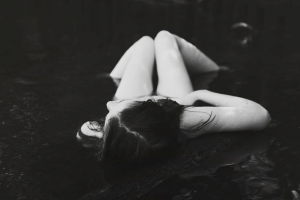
Finally, the ENCYCLOPAEDIA-strand gets to conclude each chapter, except the final chapter, with a poetic-lexical gathering and interweaving of leitmotifs: photograph, mirror, butterfly, snow, cage, dream. The encyclopaedic entry that concludes the TIME chapter is, in particular, of great dream-logical beauty. Hear, for example, how metaphoric systematism is rendered lexically when the entry, “Time and cage”, deals with the photograph and the dream: “Not even a dream can be captured by a photograph. A dream can neither be held responsible nor kept locked up. The same applies to nightmares. The latter, however, might often coincide with someone else’s dream, which explains the difficulty people have agreeing about what they see in a single photograph.”
Neither Darling River nor The Dream Faculty is a social-realist story about abused women at the bottom of society. As if to counteract this kind of interpretation, Stridsberg lets us know that neither mother nor daughter work as prostitutes out of necessity – they have enough money of their own. Stridsberg does not write social realism, she writes dreams. In her prose, the disgusting and the beautiful, dead foetuses and butterflies, are as insistent as recurring dream-visions, and as in a dream, all relationships between the characters mirror one another and are reversible.
In Stridsberg, the disgusting is experienced through the magic lens of poetry or – to use an image from Darling River – with vision distorted by the tumour-like butterfly of poetry. Lo suffers from a strange eye disease, which means that she does not see things as other people see them: “Experiences that I see as successes, my surrounding world will always see as defeats. What I interpret as love is, in the eyes of the world, nothing but violence and enmity.”
In a delirious development of one of the leitmotifs in the book – the butterfly – the doctor x-rays a butterfly-formed tumour behind Lo’s eye, but every time he operates to remove it, the tumour has gone. Stridsberg’s prose equips the reader with just such a butterfly-growth, in order for us not to see things the way we usually see them, seeing beauty in the child prostitute on the muddy banks of the river and tender kindness in the father who acts as her pimp.

So, is Stridsberg’s prose a case of tart’s romanticism, language betraying the disgusting by rendering it beautiful? The novel seems to suggest so on a few occasions. When Dolores’ little stillborn baby comes out in an “amniotic sac” – the Swedish word “segerhuva” meaning, literally, a ‘shirt of victory’ – we read: “The disgusting bag which surrounds the child cannot possibly have anything to do with that wonderful word.” And when Dolores is ill, and is penetrated “even in the rotting womb”, and the stench of the dark inner bodily fluids breaks out, she reflects on the disparity between hideousness and its beautiful appellation: “Melancholy is a lovely word but it smells hideous in a room.”
Stridsberg’s beautiful dream-prose also seems disproportionate to her malodorous motifs: An ageing, swelling Lolita with far too much sugar in her veins, a man with albinism, who fucks an ugly tart in a monkey-cage, Lolita’s runaway mother, who might well be an escape-route in the confinements of the novel, but is also a mater-dolorosa journey through prostitution, interrogation cells, alcohol, and “unwashed sex”. All garnished with painterly depictions of the female sex as an open sore, the male sex in need of washing, bad teeth, aborted foetuses, seeping bodily fluids, abscesses, blisters, ulcers, tumours.
Medealand
If Darling River gave us Lolita-variations, the play, Medealand, offers us variations on Medea, the tragic heroine. Medea, who in despair at being forsaken by her husband Jason, kills the children she has borne by him. Medea, who left her homeland in order to live with her beloved, and who is expelled when he leaves her. Medea the homeless, Medea the Jason-less, Medea the parent-less, Medea the childless mother. Medea, the embodiment of love as a merciless, destructive force: “In the future no one will make love any more/ Love will be abolished/ An incomprehensible undemocratic barbarity belonging to the past./ They will mock us daft lovers.”
Medealand starts by putting two women on stage: Medea and her mother. In the course of the play, the mother undergoes transformations: from mother to narrator to doctor and back again, all figures who commute between solicitude and rejection. In the final scene, Medea and “Mother” become fluctuating mouthpieces for lines spoken by each other and by Medea’s children, while also being physically interwoven. The older woman stands behind the younger woman, spreading out her arms, while the fantasy of Medea killing her boys materialises thus: Mother freewheeling through the desert, the boys without seatbelts, and a vision of death as freedom and the maternal embrace – this bears a resemblance to Ridley Scott’s film, Thelma and Louise (1991), where the housewife and the waitress make their ultimate flight from patriarchy by stepping down on the accelerator of their Thunderbird, driving over the cliff.
Medealand juxtaposes mother with daughter, angry woman with sweet woman. Furious Medea is the polar opposite to the princess Jason has left her for, and who in Stridsberg’s variation is little-girly and sweet. “She’s so sweet” says Jason, “she really is super-sweet”.
In a flashback in the middle of the play, the abyss opens between Jason and Medea: they have a child together. For a moment, Medea’s bed is transformed from a mourning bed to a maternity bed. Medea holds the new-born baby in her arms, Jason at her side. “This is the happiest day of my life”, says the new father. “I’m in the middle of a war”, says the new mother. Jason thinks Medea should get some sleep; he wants to go out for a while. Medea is hyper-awake and wants Jason to stay. An abyss has opened up between man and woman: childbirth as an experience they cannot possibly share.
Medea ends up as the childless mother: the figure Stridsberg also explores “from the mother map” in Darling River. The statement from Darling River is spoken in Medealand: “What is a mother without her children? A brute, a solar eclipse, a tattered rose?”
In the novel, the childless mother – the mother who has left her child, an escape route, a hinted hope of freedom – acts as a counter-image to the rest of the novel’s claustrophobic and incestuous space. In Medealand, this dream of an escape route is found in Medea’s fantasy of driving far out into the desert with her boys. But here, the escape route has become ‘death driving’; freedom is only found in death, freedom from Medea’s suffering at having been abandoned by Jason and the boys’ suffering at having been abandoned by their mother.
“You are strong, you’ll get over it”, they all say to Medea in Stridsberg’s play. But Medea uses all her strength on not getting over it, on maintaining her incurable hurt, her overwhelming suffering. In this respect, her position resembles the position taken by Jean Améry, survivor of the Nazi concentration camps, in his essay “Ressentiments”. Améry argues that ‘moral time’ contradicts ‘natural time’. ‘Natural time’ is the time that heals all wounds – but morality is to contradict the subjection of the human to a nature that is indifferent to humankind.
Stridsberg’s Medea becomes a magnificent image of this heroic resentment, of the powerful gesture that lies in contradicting ‘natural time’ and insisting: “I was done wrong”. Stridsberg presents Medea as the ‘bitter bitch’ of Antiquity.
Myth and Fairy Tale
Stridsberg is interested in the historically specific, in historical female characters associated with particular eras. Sally Bauer, triumphant at the same time as Adolf Hitler. Valerie Solanas, both part of and out of place in the women’s movement of the late 1960s. Lolita, emblematic of the 1950s’ burgeoning pop-, and sugar-, and teenager-culture.
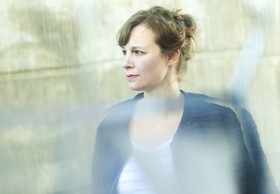
Yet at the same time, there is a current of something timeless, mythical, fairy-tale like in her writing. The river landscape is like a primordial maternal swamp of death and sexuality, just like the marsh in Hans Christian Andersen’s fairy tale, The Marsh King’s Daughter, and in the novel it inspired from Birgitta Trotzig’s pen: Dykungens dotter (1985; The Mud King’s Daughter). The mother, absorbed by the sea, is a mythical motif in Happy Sally, and the lucky threads of gold and silver are a fairy-tale motif in The Dream Faculty. Stridsberg also exhibits what one may call an American mythology, American images from the 1950s as a kind of primeval modernity: lipstick and sunglasses, frocks and Jaguars, driving along with scarves fluttering in the breeze. The separation drama between mother and child is universal.
The sea, the river, the beach, the shore and the bed, scenes for birth, sexuality, and death, the swamp of life – constitute a shared foundation to Stridberg’s oeuvre. Stridsberg is the poet of this swamp, she is so closely and dream-poetically connected to it that it becomes a bottomless, fertile source for her hypnotic stream of writing, cascading fantastic images, and murmuring a beautiful and aching song about, what it means to be a woman, what it means to be a mother, what it means to be woman-born.
– – –
Published december 2014

